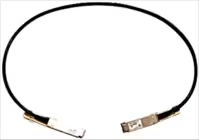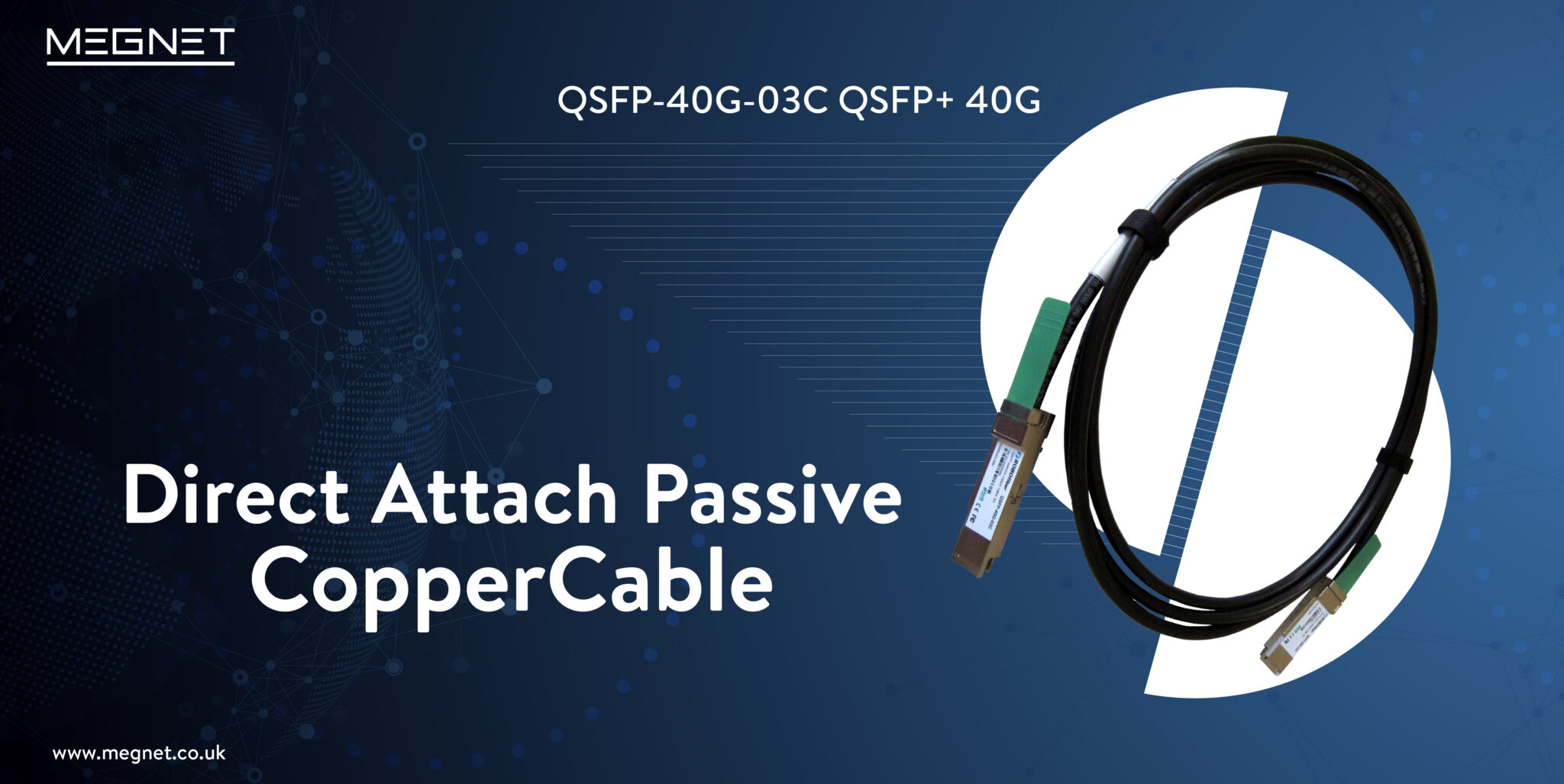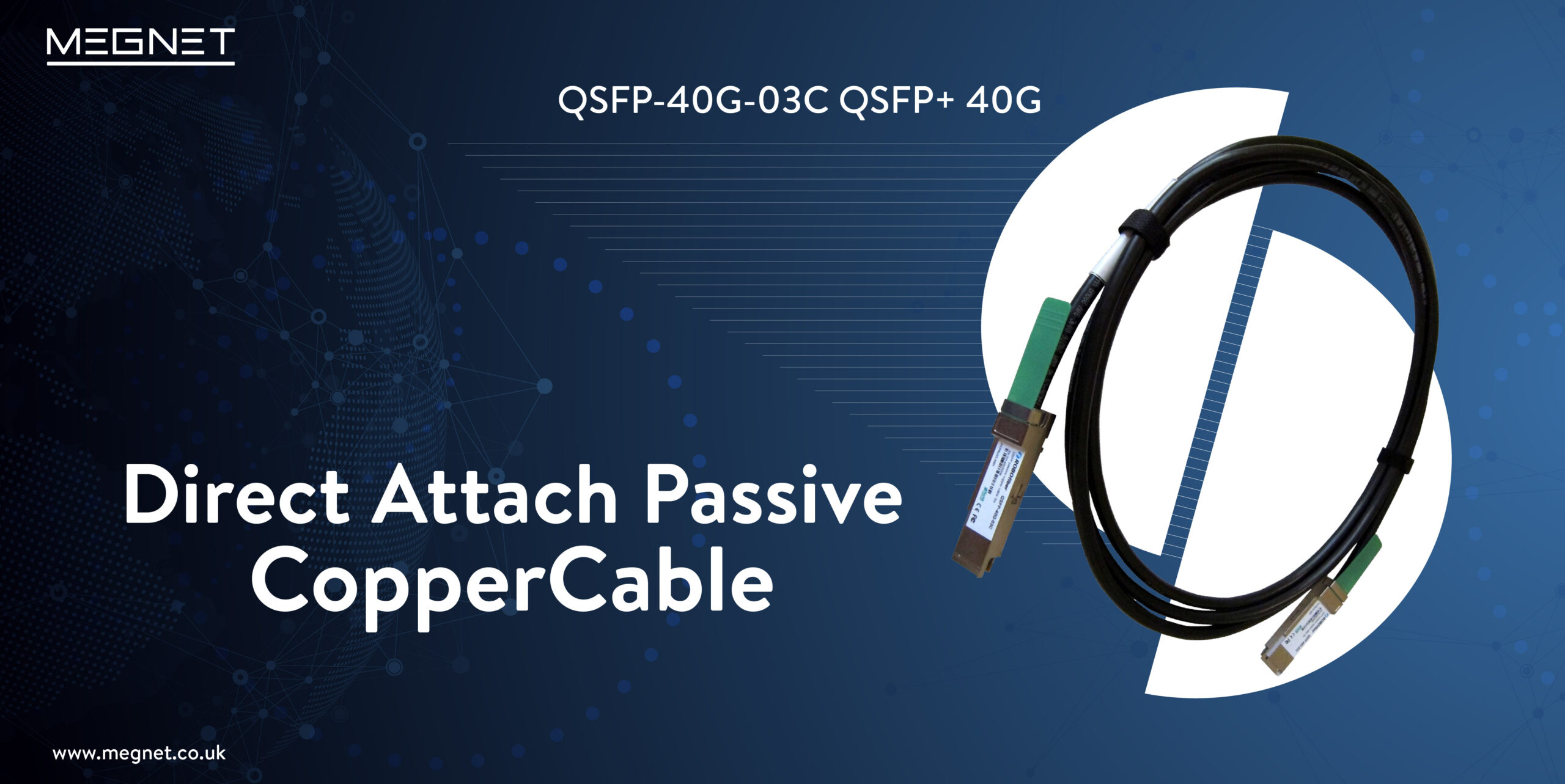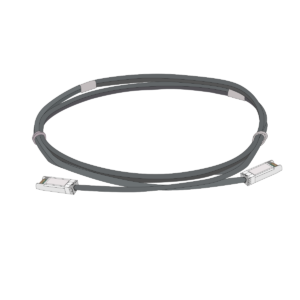QSFP-40G-03C QSFP+ 40G Direct Attach Passive Copper Cable – An Overview
In the world of data transmission, there is a rising desire for quicker and more dependable connections. New technologies are being developed to suit the demands of organizations and consumers for quicker data transfer speeds.
The QSFP-40G-03C QSFP+ 40G direct connect passive copper cable is one such technology.
This innovative cable system allows for high-speed data transfer, making it an essential component in modern data centres and high-performance computing settings. In this technical blog, we will look at the QSFP-40G-03C cable’s characteristics, advantages, and uses, as well as its relevance in today’s digital world.
What exactly is the QSFP-40G-03C QSFP+ 40G Passive Copper Cable?
The QSFP-40G-03C is a high-performance, Quad Small Form-factor Pluggable (QSFP+) copper cable that supports 40 Gigabit Ethernet (GbE). This cable belongs to the QSFP (Quad Small Form-factor Pluggable) family, which is noted for its fast data transmission capabilities. The QSFP-40G-03C is an active copper connection, as opposed to ordinary Ethernet cables, and it incorporates innovative technologies to accomplish its outstanding data transmission rates.
The QSFP-40G-03C is a 3m passive copper direct attach cable with QSFP+ ports.
Cable allows reasonable communication across small distances (same shelf) at up to 40G speeds. It uses the QSFP connection footprint to operate four separate 10G channels. Each of the four channels may operate at Gigabit to 10G (1.0Gbps to 10.3125Gbps) multi-rate rates.
The 40G Direct Attach cables are suitable for a broad range of applications, including:
- Storage Area Networks, Network Attached Storage, and Storage Servers with high capacity I/O
- Ultra high bandwidth switches and routers are examples of switched fabric I/O.
- Infrastructure for 10G/40G Ethernet data centres
- High density networking equipment connections
Characteristics and Technical Specifications:
The characteristics and technical standards of QSFP-40G-03C cable are as follows:
Quick rates of Data Transfer: If you are looking for bandwidth-intensive applications such as cloud computing, data centres, and multimedia streaming, this is the perfect choice. It has data transfer rates of up to 40 Gbps and the QSFP-40G-03C is an excellent option for applications requiring a great deal of bandwidth.
It has QSFP+ form factor. The QSFP+ form factor is characterized by its small size, which enables it to support a high port density in networking equipment such as switches and routers. Because of its hot-pluggable architecture, installation and replacement may be completed quickly and easily even while the device is in use. Therefore, when you are looking for easy installation and replacement of cables, this is the right option.
This is a passive copper-dependent technology. The term “passive copper” means that the cable does not require an external power source in order to transmit data. Instead, it makes use of the electrical characteristics of copper, which results in a solution that is both economical and efficient in terms of energy use.
This cable has Enhanced Signal Integrity. This is possible because it is built with superior components and cutting-edge engineering. Also, the cable maintains its signal integrity across longer distances, therefore reducing the amount of data that is lost and the amount of signal degradation that occurs. So if you are looking at reducing signal loss, you can go ahead with this.
- Low Latency: The QSFP-40G-03C provides minimum latency thanks to its low signal attenuation and electromagnetic interference. This is essential for real-time applications and high-performance computing.
- High Bandwidth: The cable satisfies the requirements of today’s data-intensive applications with its high bandwidth of 40 gigabits per second, making it an ideal choice.
- Backward Compatibility: The QSFP-40G-03C is frequently backward compatible with lower-speed QSFP and QSFP+ versions, which makes it possible for it to be easily integrated into already existing networking infrastructures.
Advantages and Benefits
The advantages of QSFP-40G-03C cables are as follows:
- Lower Cost: An alternative to optical fibre connections that uses passive copper cables, such as QSFP-40G-03C, can reduce costs significantly while maintaining the same level of data transfer speed. This cost-effectiveness is especially beneficial for applications that are only going to be used for a limited period of time in data centres or server rooms.
- Simple Installation: The hot-pluggable architecture of the QSFP-40G-03C makes installation more simpler, which helps to cut down on downtime and makes it easier to perform routine maintenance.
- Decreased Power Consumption Because it is a passive cable, it uses far less power than active cables do. This contributes to greater energy efficiency and reduces the expenses of running operations in data centres.
- Reliability: In comparison to more complicated active optical systems, the cable has a simpler architecture and fewer electronic components, both of which contribute to its high level of dependability and reduced failure rates.

Applications
In the fields of information technology and networking, the QSFP-40G-03C cable is used for a wide variety of purposes:
- Data Centers: The QSFP-40G-03C cable is an essential component of the server-to-switch connections, inter-rack connections, and high-speed storage area networks (SANs) found in data centres, which are environments in which prompt and dependable communication is of the utmost importance. The fast speed at which it transfers data guarantees effective data management within the infrastructure of the data centre.
- Fast-Performance Computing: The QSFP-40G-03C makes it possible to transport data at a fast speed between compute nodes in supercomputing clusters and other types of high-performance computing settings. Applications that require real-time processing and calculations that require a lot of data are suitable candidates for this technology because of its reduced latency and better signal integrity.
- Cloud Computing: Cloud service providers make use of the QSFP-40G-03C cable to ensure that cloud-based applications have a high data throughput. The cable makes a contribution to the overall performance of cloud services and the responsiveness of such services by creating connections between servers and networking equipment in a smooth manner.
- Ethernet Aggregation: The QSFP-40G-03C cable is a useful tool for providing an effective solution in networking configurations that need the consolidation of several Ethernet connections operating at lower speeds into a single connection operating at a higher speed. It makes it possible to aggregate Ethernet, which combines the many data streams in order to provide a link with a high bandwidth of 40 Gbps.
Direct Attach Cables
A Direct Attach Copper cable, also known as a DAC cable, is a twinax copper connection that is used to connect ports to switches, routers, servers, or data storage devices across short distances.
It is made up of a shielded twinax copper cable with pluggable connections such as SFP+, SFP28, QSFP28, and QSFP+ on each end.
Direct Attach Cables are utilized in data center interconnect applications that need a short reach, high density, and high speed. They are intended for networking, data storage, and telecom systems that require high network efficiency, low power consumption, and low latency at a cheap cost.
There are two varieties: passive and active. Active DAC uses signal amplification, class clock, data recovery (CDR), and equalization technologies to support greater distances than normal passive DAC cables, which do not include any electrical components.
A Passive DAC is ideal for transmission distances of up to 7m, while an Active DAC is suitable for distances of 7-15m.
Common Uses for Direct Attach Cables
- DAC cables are most commonly used to connect equipment inside the same data rack that requires a small transmission distance, generally 1-2m. Having said that, we do provide lengths ranging from 0.5 to 15m.
- Ethernet 10G Connections
- To establish a 10G Ethernet connection, an SFP+ to SFP+ DAC cable is inserted directly into both pieces of equipment, eliminating the need for extra Fibre Patch Leads.
- Ethernet connections at 40Gbps
- To establish a 40G Ethernet connection, a QSFP+ to QSFP+ DAC cable is inserted directly into both pieces of equipment, eliminating the need for extra Fibre Patch Leads.
- They can also link a single 40G port to up to four 10G Ethernet ports. A 40G DAC breakout cable with 1 x QSFP+ (40G) on one end and 4 x SFP+ (4x10G) on the other end is required for this application. Of course, the distance between the hardware ports limits this option, but in the correct setting, it may be a very simple and cost-effective solution.
- Ethernet connections at 100Gbps
- To establish a 100G Ethernet connection, a QSFP28 to QSFP28 DAC cable is inserted directly into both pieces of equipment, eliminating the need for extra Fibre Patch Leads.
- They can also link a single 100G port to up to four 25G Ethernet ports. A 100G DAC breakout cable with 1 x QSFP28 (100G) on one end and 4 x SFP28 (4x25G) on the other end is required for this application. Of course, the distance between the hardware ports limits this option, but in the correct setting, it may be a very simple and cost-effective solution.
Know all about QSFP transceivers and their role in the networking industry.
FAQ's
The maximum data transmission speed that can be achieved with a QSFP-40G-03C cable is 40 Gbps
Yes, Backward compatibility with lower-speed QSFP and QSFP+ versions is normally supported by QSFP-40G-03C.
The passive copper technology used by QSFP-40G-03C takes advantage of copper's inherent electrical qualities to transmit data without the need for an external power source.
In data centres, QSFP-40G-03C is utilised for the establishment of connections between servers and switches, inter-rack connections, and high-speed storage area networks (SANs).
The QSFP-40G-03C allows for high-speed data transmission between compute nodes, which makes it suited for use in high-performance computing systems
The networking equipment such as switches and routers can accommodate a greater number of connections because of the high port density made possible by the tiny QSFP+ form factor.
The QSFP-40G-03C uses a passive copper technology that is both cost-effective and energy-efficient, and it also provides reliable data transmission.
Yes, the QSFP-40G-03C may be used for Ethernet aggregation, which is the process of combining Ethernet connections operating at lesser speeds to create a single high-speed connection operating at 40 Gbps
Because of its low signal attenuation and electromagnetic interference, the QSFP-40G-03C has a minimal latency, which is essential for applications that run in real time.
QSFP-40G-03C is a passive copper cable, therefore it uses less power than other types of cables, which contributes to the overall energy efficiency of data centres.











Leave a comment
Your email address will not be published. Required fields are marked *